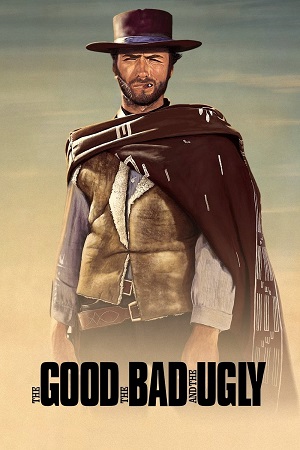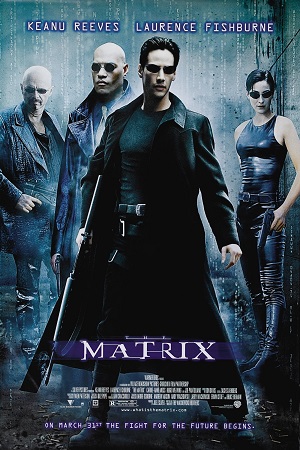The Good, the Bad and the Ugly (1966)

The Good, the Bad and the Ugly is a classic Spaghetti Western film released in 1966, directed by the renowned Italian filmmaker Sergio Leone. This epic film is the third installment in the "Dollars Trilogy," following A Fistful of Dollars and For a Few Dollars More. Set during the American Civil War, the movie is celebrated for its iconic cinematography, intense storytelling, and unforgettable musical score composed by Ennio Morricone.
The film's narrative revolves around three morally ambiguous gunslingers: the "Good" (played by Clint Eastwood), the "Bad" (Lee Van Cleef), and the "Ugly" (Eli Wallach). The trio embarks on a perilous journey across the war-torn landscape in search of buried Confederate gold. As they navigate through treacherous alliances and betrayals, their paths converge in a climactic showdown that has become legendary in the annals of cinema.
The Good, the Bad and the Ugly is widely acclaimed for its groundbreaking approach to the Western genre. Sergio Leone's directorial vision and innovative use of widescreen cinematography redefined the conventions of traditional Western films. The movie's striking visual style, characterized by extreme close-ups, panoramic landscapes, and intense close-quarter duels, has left an indelible mark on the cinematic landscape.
Ennio Morricone's haunting musical score is an integral part of the film's identity, with its evocative themes and iconic use of whistling and chanting. The soundtrack has become synonymous with the Spaghetti Western genre and continues to resonate with audiences worldwide.
Beyond its technical achievements, The Good, the Bad and the Ugly is celebrated for its complex characters and morally ambiguous storytelling. The film delves into themes of greed, loyalty, and the harsh realities of survival in a lawless frontier. The dynamic interplay between the central characters and their shifting allegiances adds layers of depth to the narrative, elevating it beyond a mere tale of gunslinging bravado.
The movie's impact extends far beyond its initial release, influencing generations of filmmakers and leaving an indelible imprint on popular culture. Its iconic moments, such as the intense standoff in the graveyard and the climactic duel, have been endlessly referenced and parodied in various media, cementing their status as enduring symbols of cinematic excellence.
The Good, the Bad and the Ugly stands as a timeless masterpiece that continues to captivate audiences with its bold storytelling, technical innovation, and unforgettable characters. Its enduring legacy as a pinnacle of the Western genre cements its place in film history, ensuring that it will be cherished by cinephiles for generations to come.
Related News
Top 10 Best Disney Villains Characters
When it comes to iconic characters, Disney has created some of the most memorable and captivating villains in the world of entertainment. From sinister sorcerers to cunning queens, Disney villains have left an indelible mark on popular culture. Here, we present the top 10 best Disney villain charact
The Top 10 Best Comedy Movies of All Time
Comedy movies have been a beloved genre in the film industry for decades, providing audiences with endless laughter and entertainment. From classic slapstick humor to witty, satirical storytelling, comedy films have a timeless appeal that transcends generations. In this article, we will explore the
Butch Cassidy and the Sundance Kid (1969)
Butch Cassidy and the Sundance Kid is a 1969 American Western film directed by George Roy Hill and written by William Goldman. The film stars Paul Newman as Butch Cassidy and Robert Redford as the Sundance Kid, two notorious outlaws on the run from the law. The film is widely regarded as a classic o
High Noon (1952)
High Noon is a classic 1952 Western film directed by Fred Zinnemann and starring Gary Cooper and Grace Kelly. The film is often regarded as one of the greatest Westerns of all time and has left a lasting impact on the genre. High Noon is celebrated for its powerful storytelling, iconic performances,




Comment Record:
Reply to comments: